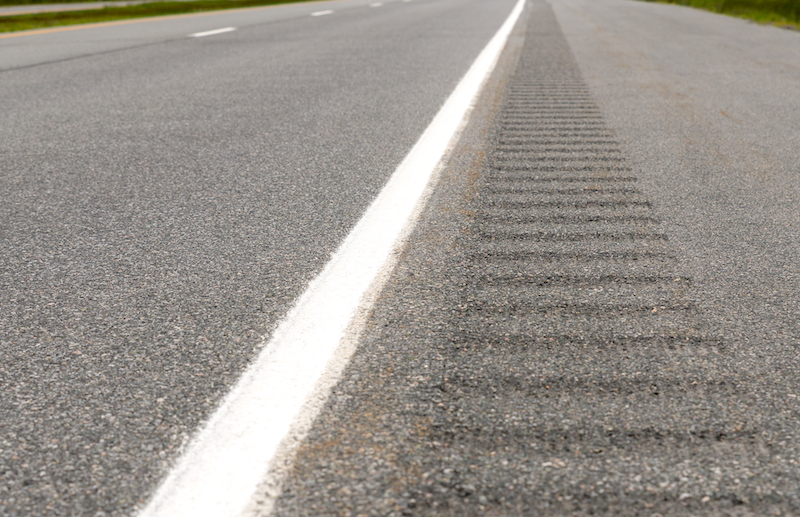How Can I Tell If I'm Too Tired To Drive?
Staying alert behind the wheel can help you save lives.

Staying alert behind the wheel can help you save lives.

You’re on day two of a long road trip and didn’t realize you were sleepy until your tires hit the rumble strip. Or you didn’t get enough hours of sleep last night, and now you’re questioning if you’re too tired to get behind the wheel at all—let alone tackle that drive from Cleveland to Austin.
At Lemonade Car we care about your safety—and the well-being of all drivers, animals, and other lifeforms out there on the road. (Not to mention inanimate objects—highway barriers have feelings, too!).
Check out our tips and tricks on how to identify the signs of being too sleepy to drive, and how to prevent drowsy driving in general.
You might be wondering “What’s the big deal with a little sleepiness? I’ll just roll the windows down for some fresh air and crank the tunes.”
Unfortunately, that might not be enough.
According to estimates from The National Highway Traffic Safety Administration, every year about 100,000 police-reported, drowsy-driving crashes result in nearly 800 fatalities, and about 50,000 injuries. These statistics alone should put you on high alert.
Sleep deprivation has physical side effects like:
All of these make it harder to practice safe driving. It’s never a good idea to drive while tired or suffering from sleep deprivation, especially if you’re going long distances. So it’s important to check in with yourself before you even get behind the wheel to identify if there are any signs that you’re too tired to drive.

If you’re looking for a big hint that you’re too tired to drive, consider these your “wake up” calls.
There are some driving tips out there that just won’t do the trick when you’re sleep-deprived, and could even be dangerous. If you’re trying to prevent drowsy driving, avoid these tactics.
If you think that munching on your favorite road-trip snacks will help keep you alert behind the wheel, think again. Eating or drinking while driving—even if it’s guzzling an energy drink—actually makes the problem worse.
One study reports that snacking behind the wheel slows reaction times by 44%. If you regularly drive with one hand on the wheel and a cup of coffee in the other, you could take longer to react by 22%, compared to a driver that keeps both hands on the wheel.
Belting your heart out to a playlist on the radio during a road trip is an American tradition. Jamming to your music on the highest volume may be part of the fun of a long drive, but even the greatest hits won’t keep you awake long-term.
The shock of cold air from the A/C or fresh air from an open window may wake you up temporarily, but the effect is at best just that—temporary.
Has your attention ever wandered while you’re on the phone at home, listening to a friend complain about her new boyfriend (or was it her ex-boyfriend?) Then chances are your mind will be in places other than the road ahead if you’re talking on the phone while driving.
If your pal’s latest drama does capture your attention, you’ll be even more distracted. And distracted driving isn’t any better than drowsy driving.
Considering diving into that new Stephen King novel on your next drive? Think about the type of driving you’ll be doing. One study found that listening to audiobooks while driving a boring course improved reaction times and had a good impact. So if your road trip is going to be long, flat, and straight, crank up the King.
But this might not apply if you’re navigating a complex route, one that that involves lots of twists and turns. Driving through a busy city? Skip the audiobook.

So, what does keep you awake and alert while driving?
If you know that you’re facing a long trip the next day, make sure to get enough sleep. Even general tiredness can impact your driving skills, so get those zzz’s!
Go for a quick run, do some jumping jacks, take a 20-minute HIIT Peleton ride—whatever gets your heart rate and oxygen levels up before you settle in for a long drive.
Find a safe place to pull off the road and take a power nap. The Sleep Foundation says that even a 20-minute nap can boost your concentration and energy levels. But keep it short—if you nap for too long and enter deep sleep, you could wake up groggy.
Some caffeine can boost alertness, but don’t overdo it (and don’t drink it while driving, since holding that cup is a distraction). Also, skip the sugar, which could make you jittery, followed by a sugar crash shortly after.
It can take up to 30 minutes for that cup of joe to enter your bloodstream, so don’t count on it kicking in right away. And be aware that, even when caffeinated, you can experience what are known as micro-sleeps—short lapses in attention that last long enough to cause an accident.
Ask yourself if you could avoid driving while sleepy altogether. Could you take the bus or train home after a long shift? Or call a rideshare? Driving less is one way to avoid drowsy driving (and to lower your car insurance rates).
Carpooling is a great way to avoid driving while sleep deprived. With more than one driver, you can take turns. And when you’re in the passenger seat, take a power nap!
Pay attention to your circadian rhythms when planning your drive. Your circadian rhythm is the internal, 24-hour cycle of sleepiness. Most people are sleepiest at night and experience a post-lunch dip in energy levels. Try to plan your road trip for when you know you’ll be more alert.
Look, you might have driven while drowsy in the past and nothing bad happened. You got lucky. But why continue to push that luck?
At Lemonade Car, the way you drive matters. We crunch numbers on how much and how well you drive to determine your safety score during each 6-month term. Then, we reward safe drivers with savings.
You’re safest behind the wheel when you’re awake and alert. By avoiding driving while drowsy you’ll keep yourself and others safe—and you may also find yourself eligible for lower car insurance rates.
Please note: Lemonade articles and other editorial content are meant for educational purposes only, and should not be relied upon instead of professional legal, insurance or financial advice. The content of these educational articles does not alter the terms, conditions, exclusions, or limitations of policies issued by Lemonade, which differ according to your state of residence. While we regularly review previously published content to ensure it is accurate and up-to-date, there may be instances in which legal conditions or policy details have changed since publication. Any hypothetical examples used in Lemonade editorial content are purely expositional. Hypothetical examples do not alter or bind Lemonade to any application of your insurance policy to the particular facts and circumstances of any actual claim.